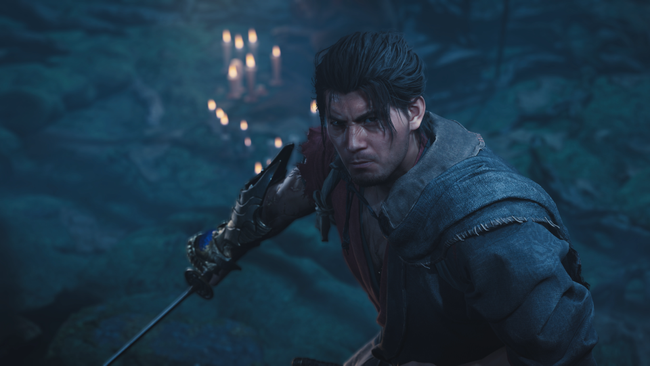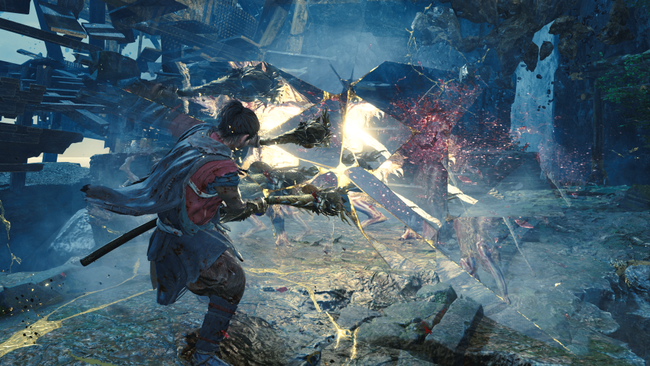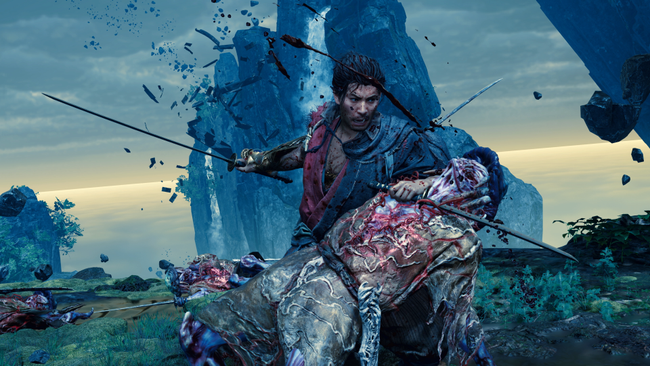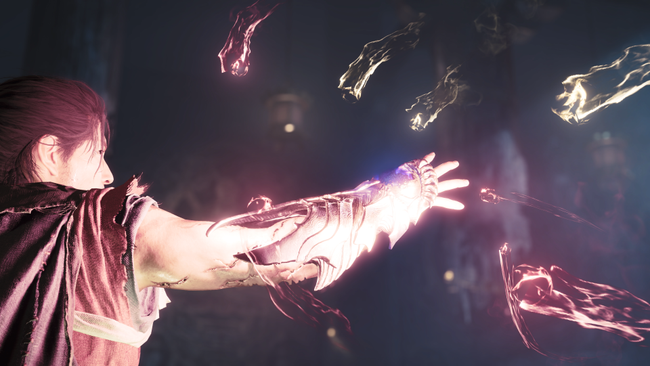
Seeing Onimusha: Way of the Sword in action reassured me that Capcom remembers what makes Onimusha compelling
Capcom’s Onimusha series has taken its fans on a rollercoaster throughout recent years. After remastering the original game in 2018, several years of complete silence followed. Onimusha fans everywhere gradually began to lose hope in the future of the series, which was already a familiar feeling after a dormant decade following the release of Onimusha: Dawn of Dreams in 2006. Signs of life arrived in November 2023 with the Netflix Onimusha TV show, although it was far from what Onimusha fans wanted.
Onimusha loyalists continued to suffer throughout 2024, though they were eventually rewarded for their patience. They celebrated the end of 2024 with the announcement of a brand-new video game entry in the Onimusha series with Onimusha: Way of the Sword. A remaster of Onimusha 2: Samurai’s Destiny was eventually announced the following February and just recently released at the end of May.
This was Capcom’s firm message that Onimusha was back. Of course I’m still crossing my fingers for modern re-releases of Onimusha 3: Demon Siege and Onimusha: Dawn of Dreams (my personal favorite), but it’s even more exciting to see what a brand-new Onimusha will look like. Capcom was ready to answer that question at this year’s Summer Game Fest as I got to see a hands-off first look of Onimusha: Way of the Sword being played live.

Like with previous Onimusha entries, the new title in Capcom’s samurai action series stars yet another famous historical figure with a famous actor modeled around them. This time around, players take control of the legendary Musashi Miyamoto with the model of late, renowned actor Toshiro Mifune. In the west, Mifune was best known for his roles in numerous films directed by Akira Kurosawa including Seven Samurai, Yojimbo, Rashomon, and much more.
The presentation I saw for Onimusha: Way of the Sword already captures the classic feeling of playing through the older Onimusha entries. Slaying the Genma demons will leave various colored soul orbs that players must manually suck into Musashi’s Oni Gauntlet just like past Onimusha titles. Their color dictates their effect - gold orbs recover HP, and red orbs are currency for other upgrade systems (the specifics were not shown in the presentation), while blue orbs see the biggest change this time around.
Blue orbs tend to fill up a magic gauge in past titles for players to cast spells, but Way of the Sword seems to have either replaced or expanded this system with skill techniques. Throughout this hands-off demo, Musashi displayed his mastery of the katana as his base weapon, and was able to utilize a skill where he wielded a pair of dual swords briefly throughout the duration of the skill. This technique wasn’t on a timed cooldown; instead, blue orbs filled up a skill gauge that dictated when it could be used again. I’m not exactly sure if magical spells are entirely gone, or they just haven’t shown them yet.

One of the most intriguing subtle systems they showcased for Way of the Sword, that prior Onimusha titles possessed, is how soul orbs can also be utilized by enemies. If players don’t suck in lingering soul orbs, there’s a chance that the surrounding Genma will suck it up themselves which in turn, powers them up and gives them access to new attacks. A flying Genma demon, for instance, started spewing a new projectile attack frequently after it absorbed several soul orbs, and even did a self-destruct technique after it latched onto Musashi’s head. This has a lot of potential to alter the dynamic of encounters, since it will push players to consider leaving themselves vulnerable for a few moments to suck in orbs, in order to deny them from being consumed by surrounding foes.
The Issen system that was first introduced in Onimusha 2: Samurai’s Destiny makes a return, as well. As an enemy’s attack is about to strike Musashi, players can respond with a forward attack that has Musashi initiate a technique that will instantly kill grunt enemies, and significantly damage tougher ones. The Chain Issen mechanic is also in Way of the Sword; if an Issen is initiated against a large group of enemies, players can continue their Issen assault to surrounding enemies as time slows down after each Issen strike so people can choose which enemy to target next.
If there’s one significant takeaway I got out of this Way of the Sword gameplay demonstration, it’s that Capcom has deliberately made its visual atmosphere relatively darker than the other games in the series to highlight the visceral brutality of its combat. Musashi can block omnidirectionally, so he doesn’t need to be facing his opponents to deflect their attacks. When his katana makes contact with an enemy, sparks fly and brighten up the screen for a split second.

When Musashi lands the finishing blow on each individual Genma demon, it is often done in a savage, ferocious manner. There were many unique animations of Musashi’s katana slicing the flesh off Genma demons, and one of them sliced a Genma straight in half vertically from the top of its head to the bottom of its stomach. Way of the Sword’s sound design highlights the intensity of each of these kills, as Musashi’s katana meticulously cuts through them.
Although Capcom has been intentionally vague on Way of the Sword’s story specifics to prevent spoilers, there were a few story scenes in the gameplay demo that involved something referred to as the Black Mass. As Musashi progressed through the linear stage, there would be sections that possessed a dark mist that dispersed all around Musashi that allowed him to see memory flashbacks of how the Genma tortured the land’s residents. One of these Black Mass visions portrayed how the Genma forced people to throw each other off a pagoda.
Musashi also faced off against his historical rival Ganryu Kojiro at this pagoda, who was previously shown in the latest trailer for Way of the Sword. I’m very interested in Capcom's decision to employ the ‘Ganryu’ name because most other historical texts often refer to Musashi’s rival as Sasaki Kojiro, rather than his stylistic Ganryu name. Ganryu in Way of the Sword also has an Oni Gauntlet, and seems to be drunk on the power it’s given him. It's worth mentioning that players do see the boss's lifebar in Way of the Sword, which didn't come to the series till Dawn of Dreams.
As Capcom’s Way of the Sword demonstrator traded blows with Ganryu, a secondary posture bar filled up underneath the boss’s HP. When Ganryu’s posture fills up, a brief pause occurs during the boss battle that gives the player two color-coded options: red and purple. Each of them highlighted different parts of Ganryu. Choosing red deals a significant amount of HP damage, while purple does less damage but it would reward a considerable amount of colored orbs for the player to consume. If players are getting low on HP or want to charge up their skill bars, the purple option might be more preferable over the raw damage red option depending on the situation. Each option presented a unique special attack animation because Musashi targets the specific body part that each option highlights over.
After overcoming Ganryu, Musashi progressed a little further into the level and stepped into what was clearly a “boss fight area”. Upon entering, an interesting scene occurred because the Genma boss demon, Byakue, entered the area through what looked like a crack in reality. Although the boss was significantly larger than the previous Ganryu, the Capcom presenter still took it down with little problem, and the previous posture bar system I described was still present throughout it.
It's up in the air how much I would consider Way of the Sword a "Soulslike", though its aesthetic and gameplay cadence may make it seem that way to modern audiences. There was a few small shrine locations that the Capcom player deliberately shied away from. They certainly looked interactible, but I can't say for sure if these operate like bonfires or shrines in the Souls and Nioh games, respectively. Early Onimusha games were more straightforward action titles with the isometric fixed camera angles seen in classic Resident Evil entries. It wasn't until Onimusha: Dawn of Dreams that the series started to lean more into being an action RPG, although there were still light RPG mechanics in prior Onimusha titles.

I left the Onimusha: Way of the Sword presentation satisfied that the core mechanics of Onimusha were still intact. The ebb and flow of combat may be relatively more visually violent than past titles, but it is still Onimusha at its core. My biggest question is if the katana will be the only base weapon available to Musashi throughout the game, or if there’ll be other weapon types as well. There’s still quite a bit of time for Capcom to provide an answer to this, as they still have much to show for Way of the Sword since it’s slated to release sometime in 2026 for PlayStation 5, Xbox Series X|S, and PC.